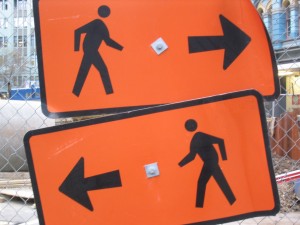As the streets and traffic lanes are changed to make way for the new bus route along Manners Street, footpaths are blocked, familiar traffic islands have disappeared and pedestrians are forced to reconsider how they navigate the city.
The infrastructure of the city is not just about moving traffic from a to b it is also about people moving from a to b. This can be more than footpaths beside lanes of traffic. While Wellington doesn’t have the rigorous inner city street pattern of cities like Melbourne, with a hierarchy of big streets, little streets and connecting lanes, here there are a number of service lanes and alleyways that allow for shortcuts through the city, offering an alternative route free of meandering pedestrians and car traffic.
Lanes are spaces of transition, places of ephemeral occupation between buildings, yet that is no reason to disregard their importance. As the inner city density increases a network of informal pedestrian connections through service lanes and alleyways will allow for permeability of the city. Not every lanes needs to be gentrified and caffeinated to be successful; sometimes it is enough just to be able to take a short cut or an alternative route across the city to avoid traffic and busy pedestrian streets and to catch a glimpse of other lives – both high life and low life.


Leave a Reply